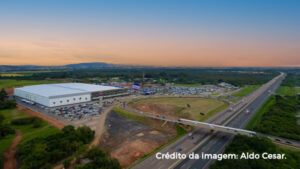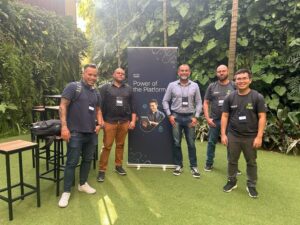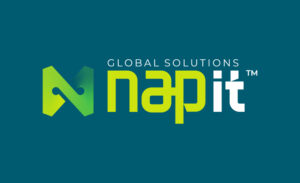What steps does your business need to take to scale and ensure that their business is not impacted by technology failures? Get expert tips from Marcelo Veriato Lima for infrastructure architecture projects
We have already presented here, on the Nap IT blog, the main mistakes companies make when not investing in infrastructure architecture projects, according to our Data Center engineer view, Marcelo Veriato Lima.
Today, the expert presents the walkthrough for an infrastructure architecture project development. Does your company need a technology infrastructure that can scale in an orderly and high-performance way?
So check out the tips in the expert voice!
How to start an “Infrastructure Architecture” project?
You want to ensure the infrastructure architecture project success. Track 5 actions that are essential to achieving your goal.
1 –Identifying business needs and goals
The first action to be taken is to conduct a thorough study with the business areas, what are the needs and objectives regarding technology environments, both in infrastructure and applications. It will give you a clearer and more complete view of what should be delivered at the end of the project.
2 – Current environment survey
Surveying the current environment is a paramount importance for architects and experts to visualize possible bottlenecks or even failures. It will bring visibility into how the environment works and how the application correlates with another, and then the lowest layer, infrastructure assets.
3 – Designing the logical architecture
Logical design is the infrastructure architecture project success cornerstone, defining data flows, perimeters, connectivity, relationships, and security. Through the Assessment result, the architect will be able to design the Data Center logical architecture and its peripheral locations. Completing this step already shows how to build the high availability layer for applications.
4 – Technologies definition and protocols
Note that so far we have not defined which protocols to use, it is a big variable as there are several ways to solve the same issue. Often influenced by the opinion of the manufacturers themselves, companies end up opting for totally closed solutions, in this case be very careful not to be dependent on a single vendor, the so-called lock-in.
Within this scenario, an alternative is the open standards use, i.e., even being a proprietary solution, choosing for open protocols and technologies, it will stimulate competition between manufacturers and their partners, consequently a lower investment cost without losing the cost. quality.
Now, speaking about open-source softwares, the difference is visible, the response time for the community that maintains an active open source project is usually faster than many proprietary solutions, with few exceptions.
Issues such as quality, performance and especially safety are a priority for community developers.
5 – Testing, optimizing, and documenting architecture
Already with the architecture designed and implemented, the time has come to test it end-to-end. Failing at any point, the infrastructure must be prepared to continue operating even in a crisis time. Optimizations are performed during this period to ensure the lowest possible downtime. Finally, detailed documentation is generated and kept alive by those responsible for the environments.
This cycle is continually repeated to ensure that the infrastructure is capable of meeting business demands.
It’s worth mentioning: avoid lock-in, test more than one solution for your need, and invest in planning.
If you missed this article first part, go to: Infrastructure Architecture: Learn about corporate mistakes and the most commonly applied models.
Stay tuned for the Nap IT blog and count on our team to answer your Infrastructure Architecture questions.
Marcelo Veriato Lima is Data Center Engineer at Nap IT.







